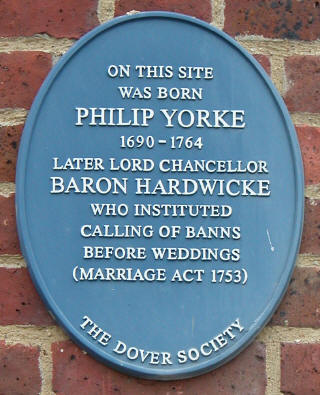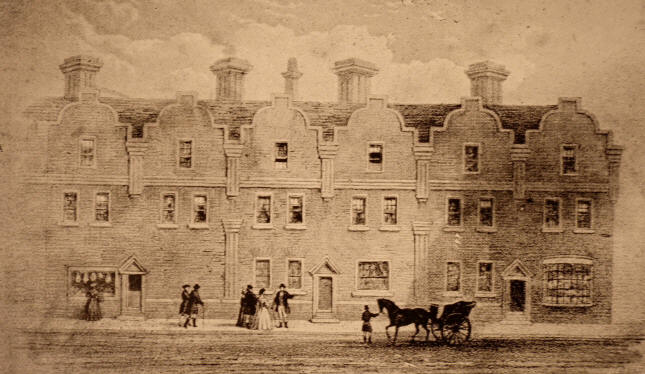| Index |
Philip Yorke, Baron Hardwicke |
|
|
||
 |
Philip Yorke was born in Snargate Street,
near the present junction with York Street, on 1st December 1690, the son
of Philip Yorke, barrister, and Elizabeth Gibbon, daughter of Richard
Gibbon of Rolvenden. Educated at a private school in Bethnal Green, Philip entered an attorney's office at the age of 14. He was entered at the Middle Temple in November 1708 and shortly afterwards became law tutor to the sons of Lord Chief Justice Parker. Called to the Bar in 1715, he transferred his practice from the King's Bench to Chancery in 1718. In 1719 he entered Parliament as the member for Lewes, Sussex, and was appointed Solicitor General. |
|
| Philip married Margaret Cocks on 16th May
1719. He was Knighted in 1720. Philip and Margaret had 5 sons
and two daughters: Philip, Charles, Elizabeth, Joseph, John, James and
Margaret. In 1733 he was appointed Lord Chief Justice of the King's Bench with the title of Lord Hardwicke and in 1737 succeeded Lord Talbot as Lord Chancellor. In 1739 he purchased Wimpole Hall, the greatest country house in Cambridgeshire. In 1753, Lord Hardwicke introduced the Marriage Act, which instituted the calling of banns before marriage. In 1754 he was created 1st Earl of Hardwicke and Viscount Royston. He died in London on 6th March 1764. Son Philip succeeded his father as 2nd Earl Hardwicke and Viscount Royston; Charles became Lord Chancellor; Joseph became a diplomat and was created Baron Dover; James became Bishop of Ely in Cambridgeshire. |
||
| For a more complete history of the life and work of Philip Yorke, see Wikipedia | ||
